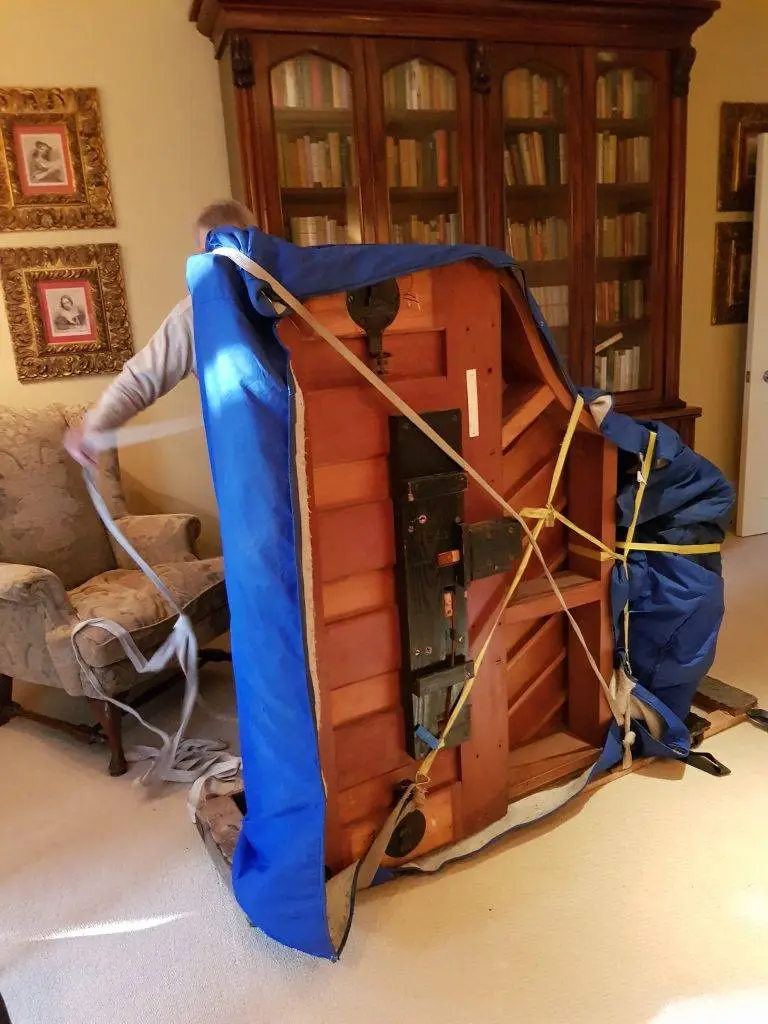🎹 Expert Piano Storage Tips: Preserve Your Instrument with Confidence
Pianos are not just musical instruments—they are cherished investments and often treasured family heirlooms. Whether you’re relocating, renovating your home, or simply lacking the space to keep your piano temporarily, proper storage is crucial. A poorly stored piano can suffer irreparable damage, but with careful planning and the right approach, your instrument can remain in pristine condition throughout its time in storage.
In this guide, we’ll walk you through everything you need to know to safely store your piano—protecting both its aesthetic beauty and musical performance.
🌡️ 1. Choose a Climate-Controlled Storage Facility
Pianos are incredibly sensitive to environmental changes. Fluctuations in temperature and humidity can cause:
Wood warping or cracking
Tuning instability
Damage to the soundboard and keys
Rusting of strings and internal metal parts
Recommended Conditions:
Temperature: 18–22°C (64–72°F)
Humidity: 45–55%
Avoid placing your piano in basements, attics, or garages. Instead, opt for a professional climate-controlled storage unit to maintain consistent conditions and protect your piano’s delicate mechanisms.
🛡️ 2. Properly Cover and Protect Your Piano
Before placing your piano into storage, wrap it thoroughly with high-quality, breathable covers. This step shields it from dust, scratches, and minor knocks.
Top Tips:
Use cotton or muslin padded covers
Avoid plastic wraps that trap moisture
Cover all surfaces, including the legs and pedals
Use additional padding for corners and edges
If possible, purchase a custom-fit piano cover for long-term storage—this provides the best protection and airflow.
📍 3. Ideal Positioning in the Storage Unit
The placement of your piano within the storage unit is as important as the facility itself.
Storage Positioning Tips:
Store upright pianos with the backboard against an interior wall
Grand pianos should be stored on their side, supported by a custom skid board
Keep the piano off the floor using a wooden pallet to prevent moisture damage
Avoid placing other heavy items on top of the piano
Keep the piano away from doors, vents, windows, or any sources of drafts or sunlight.
🧼 4. Clean Thoroughly Before Storage
A clean piano is a protected piano. Dirt and dust left on the instrument can damage the finish and attract moisture.
How to Clean:
Gently dust the entire exterior using a soft microfiber cloth
Wipe down keys with a slightly damp cloth and dry immediately
Polish wooden surfaces with a piano-safe wood cleaner
Remove any debris from inside the piano (consult a professional for internal cleaning)
Allow your piano to dry completely before covering and storing it.
🔒 5. Secure the Lid and Moving Parts
To prevent accidental damage, secure all moving parts of the piano before storage.
Close and lock the keyboard lid to prevent dust buildup
Secure the top lid and any open compartments
Wrap pedals to avoid movement and scratches
If possible, detach legs and pedals for grand pianos during transport and store them safely
Make sure all parts are clearly labelled and stored together to ease the reassembly process later.
🧰 6. Consider Professional Piano Movers
A piano is not just heavy—it’s intricate and fragile. Hiring professional piano movers ensures your instrument is transported safely into storage without causing structural damage.
Benefits of Professional Movers:
Use of correct equipment (dollies, skids, straps)
Knowledge of piano balance and weight distribution
Insurance coverage for added peace of mind
Trained in disassembly and reassembly if required
Avoid the temptation to move a piano yourself, especially grand models. The risk of damage is high without proper training and equipment.
🎼 7. Schedule Regular Check-Ins During Long-Term Storage
If your piano will be in storage for several months or more, plan periodic visits to:
Inspect for signs of moisture, mould, or pest activity
Ensure the environment remains climate-controlled
Air out the piano by lifting the cover briefly
Wipe off any dust accumulation
If you’ve stored the piano in a professional facility, they may offer monitoring or maintenance services—ask in advance.
🎶 8. Retune After Storage
Even under perfect storage conditions, a piano will likely drift out of tune. Once you bring it back into a home or venue:
Let it acclimatise to the new environment for at least two weeks
Book a professional tuner to restore its original tone and pitch
Regular tuning is essential to maintaining tonal consistency and preventing long-term string and hammer wear.
Final Thoughts: Storing Your Piano Safely
Proper piano storage is all about foresight, preparation, and care. By investing in the right environment and following these expert tips, you can keep your instrument in top condition for years to come—ready to fill your space with music once again. 🎵
Need help moving or storing your piano? Contact A1 Piano Removals today for professional advice, secure storage options, and expert relocation services across the UK.

